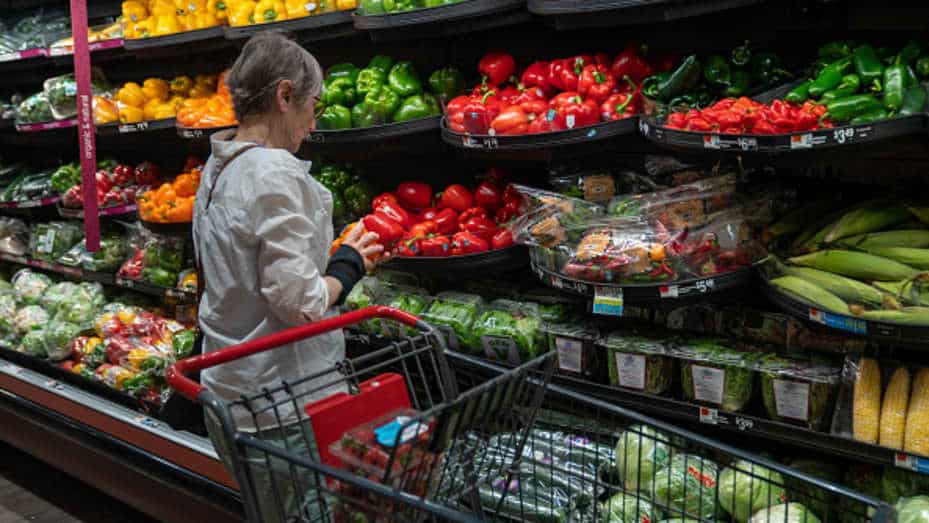High global food prices may finally see a bottom in 2024, says Oxford Economics

Rising food prices around the world may finally be seeing a bottom this year.
According to Oxford Economics, global food prices are expected to decline in 2024, offering some relief for shoppers.
“Our baseline forecast is for world food commodity prices to register an annual decline this year, reducing pressure on food retail prices further downstream,” the economic advisory firm wrote in a recent note.
The key driving force behind the decline in food commodity prices is the “abundant supply” for many important crops, especially wheat and maize.
Bumper harvests in recent months for both staple crops led to a steady decline in prices. Wheat futures have fallen almost 10% year-to-date, while maize futures lost about 6% over the same period, according to FactSet data.
Farmers ramped up production of both wheat and corn grains following higher prices after Russia began its invasion of Ukraine in 2022.
As a result, global maize harvests for the marketing year ending August this year are likely to come in at record levels, according to Oxford’s analysis. Wheat harvests are also forecast to come in high, although slightly lower than the record level in marketing year 2022 to 2023, the Oxford report said.
Russia-Ukraine war
Supply pressures of grains in Russia and Ukraine have also eased.
Despite the collapse of the Black Sea Grain initiative in July last year, Ukrainian agricultural exports have been holding up well, Oxford Economics’ Lead Economist Kiran Ahmed wrote.
Russian wheat exports have also been flooding international markets, keeping prices low, he added.
Wheat and maize, along with rice, account for over half of global caloric intake. That means the direction of their prices will critically influence consumers’ food budgets around the world, the report pointed out.
Even though wheat and corn prices have seen a robust decline, rice prices have been steadily climbing, with global supplies hampered by export restrictions imposed by India, which accounts for around 40% of the world’s rice production. Poor harvests in the country last year also pushed prices higher. Contrary to the slump seen in wheat and maize prices, rough rice futures have gained over 8% year-to-date.
Global food prices registered a decline of 9% in 2023, according to the World Bank. Similarly, the United Nations food agency’s world price index hit a three-year low in February, but saw a slight rebound in March, lifted by increases for dairy products, meat and vegetable oils.















